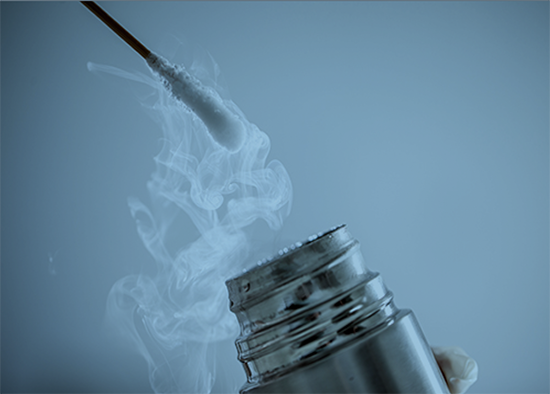
What Is Cryosurgery?
Cryosurgery (or cryotherapy) is the application of extreme cold to destroy abnormal or diseased tissue. The term comes from the Greek “cryo” meaning icy cold and the word surgery meaning literally “hand work.” Cryosurgery is used to treat a number of diseases and disorders, especially skin conditions. Cryotherapy may be a better description of the procedure, since surgery is usually associated with cutting and in most cases, this treatment (therapy) does not involve actual cutting. Cryotherapy has been in use for over two hundred years. The application of intense cold will result in the death of the targeted tissue and the numbing of surrounding sensory nerves, reducing pain and discomfort.
In humans, this technique is often used for the treatment of patients with intractable cancer, to reduce pain and discomfort by temporarily numbing sensory nerves. It is also used in humans to treat liver and prostate cancer, cervical cancer, and hemorrhoids, along with a variety of skin conditions and tumors. In animals, the technique is employed to treat tumors in locations where conventional surgery would be difficult or impossible, such as certain tumors of the mouth, or where the analgesic/anesthetic properties of the technique would be useful. Examples include the removal of highly irritant tumors or lesions which the animal is constantly biting, licking, or scratching, tumors or infected itchy lesions in elderly patients considered high risk for general anesthesia, and prolonged surgical techniques where a long anesthetic may present unacceptable risks. The intense cold also kills bacteria and other germs. This is particularly advantageous when dealing with infected tissues.
How is cryotherapy performed?
Cryotherapy uses freezing temperatures to destroy cells in the target tissues. Most of the body’s cells are comprised of about 70% water. When cells are subjected to freezing temperatures, ice crystals form inside the cells, causing them to tear and rupture. Additional cellular and tissue damage occurs when blood vessels supplying the diseased tissue freeze. The most common method of performing cryosurgery is with liquid nitrogen. The super-cooled liquid nitrogen is sprayed on the diseased tissue, circulated through a tube called a cryoprobe, or simply dabbed on with a cotton or foam swab. Recent technologic advances include the development of ultra-thin cryoneedles and the ability to use argon gas to cause ice formation, using a principle known as the Joule-Thompson effect. This newer procedure gives doctors excellent control of the amount of tissue that is frozen and helps minimize complications.
Is the technique painful?Is the technique painful?
Anyone who has been frostbitten will confirm that the actual freezing is painful. With cryotherapy, the treatment is almost always carried out under anesthesia. This may be either a local anesthetic with sedation, or more frequently, a general anesthetic. Because of the inherent analgesic/anesthetic effect of the procedure, if future cryotherapy is necessary at the same location, it may be possible to perform it without the use of any further anesthetics.
Once freezing has occurred, the tissue slowly dies and falls away. In some moist sites such as the mouth and the anus, the tissue may liquefy and look green and gangrenous. Usually all that is necessary is gentle bathing of the area to remove as much of the dead and sloughing tissue as necessary. There is sometimes a foul odor from the affected tissues. Despite the unpleasant appearance, there is no discomfort because of the temporary anesthetic effect on nerve endings. The patient is usually much happier than before. In more advanced or serious conditions, multiple cryotherapy treatments may be required.
How effective is cryosurgery?
In many cases, it can be curative depending on the condition and the site. Small warts and small skin tumors are usually cured with just one cryotherapy session. Tumors in the mouth often go into remission after one treatment and cause no further trouble. This technique is sometimes also used for the removal of aberrant or extra eyelashes (distichiasis). This procedure has a high success rate.
© Copyright 2021 LifeLearn Inc. Used and/or modified with permission under license.
